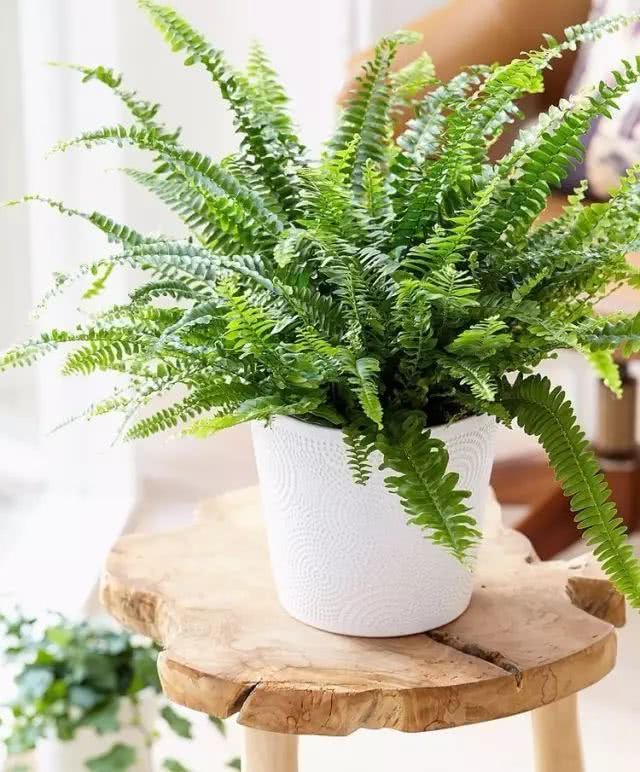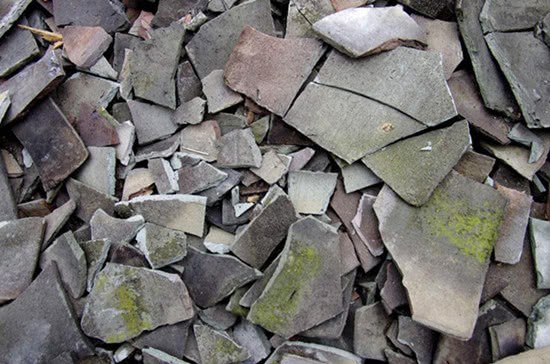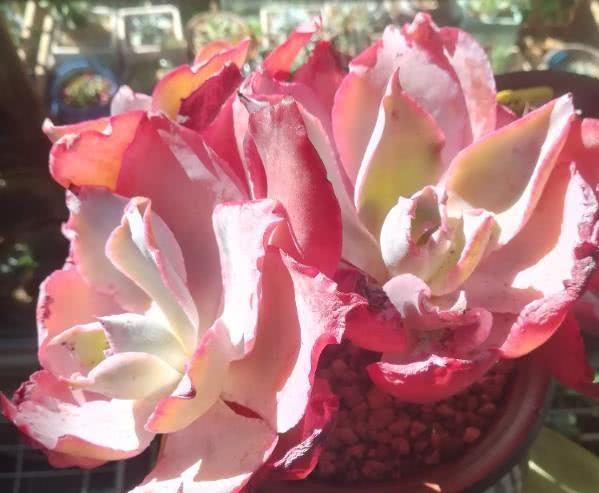The mash-up power school of the flower art world-fern must have at home

Deep bamboo shoots fern dry Zhonglu, sunset fishing firewood three island immortals. With peculiar and elegant morphology and exquisite foliage, ferns have gradually become the best choice for floral art and home decoration to enhance their aesthetic style. Pteridophytes with large or small sizes can fully show tenacious adaptability at home, grow slowly and steadily, and let the plant form spread out into the most suitable natural posture.
Boston fern: natural scavenger, absorbing more than 80% of indoor harmful gases
Boston fern is one of the most common ferns, which belongs to perennial evergreen ferns of the genus Nephropteridaceae. The leaves of Boston ferns are feathery, bright and elegant, with a breeze, and the leaves wobble gently, like dancers dancing.
They range from desktops to living rooms, study rooms and foyer lobbies. Boston ferns of different sizes can be properly decorated. The leaves of the Boston fern will fall when they are unfolded, so they are also suitable for hanging and decorating the environment in the air. Boston fern has a superb skill: it is a master of formaldehyde adsorption among ferns, adsorbing about 20 micrograms of formaldehyde per hour. In addition, Boston fern can also inhibit the release of xylene and toluene from computer monitors and printers, and the air optimization power Max is the "favorite" of green plants at home.
Maintain tips: avoid direct sunlight and maintain a ventilated and shaded environment in order to keep the leaves green. Prefer a warm and high humidity environment. In summer, water can be sprayed around the Boston fern or to the leaves to increase humidity and prevent the leaf margin from drying and curling. Keep the soil moist. Every time you water thoroughly, you will see dry and wet.
Second, antler fern: forest elves that glow on the wall, the most mysterious & artistic & literary atmosphere.
As a member of the fern family, antler ferns get their name because their leaves are shaped like antlers. They belong to epiphytes and also come from the tropics. Once popular in Ins and European and American circles, but also because of its precious rarity, the price is relatively high, but never cut crazy fans to free up a whole white wall just to get the favor of antler fern.
It is generally planted in boards or rotten wood and hung on the wall to watch works of art, which is more vital than ordinary pendants. Can be hung in the entrance hallway, in the corner of the living room, in front of the desk / desk.
Maintenance tips: need more watering during the peak growth period in summer, watering in the morning or evening when the temperature is low, and often spraying water. The opposite is true in winter. Try to avoid touching its lovely leaves with your hands, otherwise, the white villi on the leaves will fall off easily.
Bird's nest fern: epiphytic ferns, natural air fresheners
Bird's nest fern, also known as iron horn fern, mountain perennial fern or crown fern, is a perennial herbaceous foliage plant of the fern family. The leaves of the bird's nest fern grow in clusters, and an empty funnel is formed in the middle, which is similar to the bird's nest in appearance, so it is named the bird's nest fern.
As an epiphytic fern, bird's nest fern is often attached to rainforest, on the trunk of seasonal rainforest, or on the rocks under the forest, originating in southeastern Asia, India and eastern Africa, and widely distributed in tropical China.
Bird's nest ferns can be suspended indoors, or planted under tropical garden trees, or on rockery rocks, and potted small plants can be arranged in the living room or study. They are effective air fresheners, and their luxuriant green leaves can absorb a large amount of carbon dioxide through photosynthesis, making the closed indoor air fresh and natural.
Maintain tips: avoid direct sunlight and maintain a ventilated and shaded environment in order to keep the leaves green. Like the warm and humid environment, in summer, you can often spray water around the bird's nest fern to cool down and increase humidity to prevent the leaf margin from drying and curling. Summer interval of about 5-7 days, each watering thoroughly, see dry and wet. Water once or twice a month in winter.
Wolftail fern: the overlord in the plant micro-landscape
Dryopteris Dryopteris is a plant of the genus Dryopteris of the family Drynariaceae, which is mostly distributed on the wet rocks or tree trunks near the stream. Because its rhizome is exposed, fleshy, and the surface is covered with brown scales and hair, like rabbit feet, it is also known as rabbit foot fern.
Dryopteris Dryopteris has a kind of wild beauty, which can make a variety of shapes with its winding stalk, and match it with other plants in harmony, so Dryopteris has an absolute dominant position in the plant micro-landscape.
Taking Wolftail fern as the main material, several shapes of micro-landscape include:
1. Plant it in a flowerpot and let the fern stem cling to the outer wall of the flowerpot.
2. Wrap the wolftail fern into a ball and hang it up.
3. Cling the wolftail fern to the rotten wood.
No matter which shape, over time, the verdant moss will grow between the wolftail ferns, like a natural micro-forest landscape.
Maintain tips: avoid direct sunlight to prevent leaves from wilting and curling. Like a warm and humid environment, you can often spray water around it or to the leaves in summer to cool down and increase humidity. According to the principle of watering, see dry as well as wet. Semi-ventilation is appropriate.
Fifth, Guanzhong fern: Nordic style household necessities / net red leaves
Some time ago, a type of leaf from the Netherlands was instantly popular in Ins with its "cold wind" temperament, which can be called the most popular net red leaf in history. This kind of foliage is Dryopteris paniculata. Dryopteris is a genus of Dryopteris of Dryopteridaceae. Its unique gray-green hue and unique leaf shape of ferns interpret the natural minimalism of Nordic household style and make people easily associate with "wilderness" and "nature".
Maintenance tips: at present, there is only the Dutch imported Dryopteris leaf wood supply, bottle flowering period can be as long as 2 to 3 months, water bottle can be.
- Prev

Add some to the flowerpot. This plant has neither rotten roots nor yellow leaves.
If plants grow for a long time, they will either have rotten roots or yellow leaves. What should we do? As a matter of fact, there are many tips for plants that don't rot roots or yellow leaves. Let's take a look at them with good conservation and horticultural experts. How to prevent plants from rotting roots? 1. In the flowerpot of broken tiles.
- Next

It's easier to fatten succulent plants in September. Learn the skills well.
In September, no matter what type of succulent plant it is, if it is maintained indoors or in a place with weak light for a long time in summer, it should not be directly moved to strong light. If it is light, it will leave a scar. If it is serious, it will cause the death of the whole plant.
Related
- Wuhan Hospital Iron Tree Blooming Result Was Instantly Frightened by the Gardener Master
- Which variety of camellia is the most fragrant and best? Which one do you like best?
- What is the small blue coat, the breeding methods and matters needing attention of the succulent plant
- Dormancy time and maintenance management of succulent plants during dormancy
- Minas succulent how to raise, Minas succulent plant pictures
- What are the varieties of winter succulent plants
- How to raise succulent plants in twelve rolls? let's take a look at some experience of breeding twelve rolls.
- Attention should be paid to water control for succulent plants during dormant period (winter and summer)
- Watering experience of twelve rolls of succulent plants
- Techniques for fertilizing succulent plants. An article will let you know how to fertilize succulent plants.

